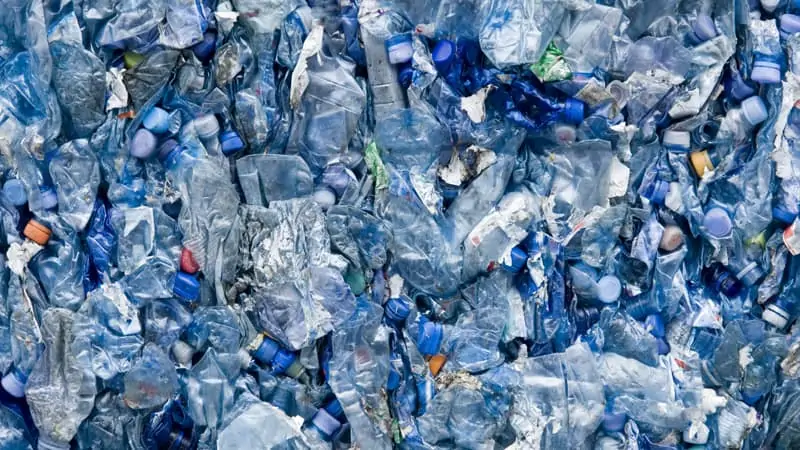Plastic is everywhere. Packaging, electronics, electrical textiles, consumer products, and building and construction use plastic. There are seven different types of plastic, all with distinct purposes and uses. Some plastics, however, are not reusable or recyclable because they don't break down easily. Additionally, the materials that give plastic its durability and flexibility can also be toxic. Research has discovered chemicals in plastic that are downright harmful to our health. While there seems to be more of a concerted effort to limit plastic use, here are some reasons you should avoid using plastic.
What is BPA?
Bisphenol A (BPA) is a synthetic compound found in plastic used in drink and food packaging. Studies have shown that BPA plays a role in diabetes, heart disease, prostate cancer, fetal brain development, and reproductive disorders. It is also known for damaging mammary glands during development, increasing the risk of breast cancer in men and women alike. BPA may also have detrimental effects on the male reproductive system. It also interferes with the endocrine system, including the hormones that regulate your metabolism, leading to obesity. Other concerns regarding BPA include congenital disabilities, miscarriages, thyroid function, and high blood pressure.
Many companies have started to eliminate BPA from their products, even though the United States Food and Drug Administration (FDA) claims that the amount of BPA used in this packaging is low enough to be safe. The European Union bans BPA because it's believed to be harmful to our health.
What are phthalates?
Phthalates are a group of chemicals used in plastics and many other products to increase flexibility and softness. You can find phthalates in food packaging, medical devices, hairspray, nail polish, among other things. High levels of phthalates may cause reproductive issues and breast cancer. When it comes to cosmetics, the FDA monitors the levels of phthalates used. On the other hand, the European Union has banned the use of phthalates.
Plastics in our oceans
Unfortunately, a lot of plastic ends up in our oceans, where it breaks down into microplastics. Scientists have proven that these microplastics absorb the chemicals in the ocean waters, such as DDT, polychlorinated biphenyls (PCBs), pesticides, and hexachlorobenzene. These chemicals are toxins that may cause reproductive disorders, cancer, and hormone disorders. Fish and other ocean life eat the microplastics carrying these toxins and may end up on your plate, allowing them to enter your body and reek havoc.
How can you avoid plastics?
As stated, plastic is everywhere. So, how do you avoid plastic, especially once you discover how toxic it can be to humans? You can take several steps to avoid plastic as much as possible, reducing your risk of harm. These steps include:
- Use glass or metal containers. Store leftovers or pack your lunch using glass or metal containers. Not only are these containers safer for you and the environment, but they are also reusable.
- Avoid single-use plastic. Plastic cutlery, plates, straws, and baggies may make life easier, but that convenience is not worth your health. These products have alternatives that you can use to avoid single-use plastic.
- Bring your bag. When you do your grocery shopping, grab a cloth bag from home to stuff with your goodies. These bags are not only healthier for you but also reusable.
- Buy in bulk. When you buy in bulk, there's less packaging and disposable containers to deal with, reducing the amount of plastic used.
- Read labels. Check for BPA and phthalates on the label of products you purchase and consume. Reading labels can also help you determine whether or not your plastic product is recyclable. If it is, make sure to recycle appropriately.
- Recycle chewing gum. Did you know that most chewing gum today is made with plastic? Reduce or eliminate the amount of gum you chew to keep yourself safe from any chemicals, or at the very least recycle any gum you need to chew.
- Avoid cosmetics with microplastics. Check your cosmetics to make sure they are plastic-free. You can also purchase a biodegradable brush made of wood.
- Wear natural fabrics. Plastic is in our clothes too. Check labels for natural fabrics to keep those plastics off your skin.
Furthermore, understand that some plastics are more harmful than others. Avoid plastics labeled as 3 (vinyl, PVC), 6 (polystyrene foam), and 7 (typically contains PBA). When necessary, opt for safer plastics labeled 1, 2, 4, and 5. You'll find the number molded or printed on the bottom of most plastic products.
BPA-free plastics are not the answer
BPA replacement in plastics has shown similar results when tested during everyday use, such as sunlight exposure, dishwashing, and microwaving. The BPA-free plastics emit chemicals identical to BPA that mimic human hormones. One substitution for BPA is bisphenol S or BPS, which are in beverage can linings and the plastic packaging used for food. Studies show that BPS, even in concentrations of less than one part per trillion, can potentially lead to metabolic disorders, including asthma, congenital disabilities, diabetes, and cancer. It's no better than the BPA that it's intended to replace as a safer alternative.
Educate yourself and others
It's imperative to take the time to learn about the dangers of plastic, the products that contain these harmful chemicals, and how you can avoid them. Once you start to read about the studies on plastic, you'll want nothing to do with having them in your homes. Know that BPA and phthalates are known endocrine disruptors, which mimic hormones such as estrogen, and you should avoid them at all costs.
If you're interested in undergoing genetic testing to discover any predispositions you may have, you can check out Ancestry DNA, 23 & me, or NUTRITION GENOME. For more information, you can also reach out to the knowledgeable team at the biostation at 561-462-4894 or via our secure online messaging service. Or you can request a consultation online. A team member would be happy to answer any questions you may have or get you on the path to wellness. We strive to redefine preventative health care at every touchpoint by providing the highest care level from testing to treatment.
 East Delray, Florida
East Delray, Florida West Delray, Florida
West Delray, Florida The Boca Raton, Florida
The Boca Raton, Florida Midtown Miami, Florida
Midtown Miami, Florida Carillon Wellness Resort
Carillon Wellness Resort  Williams Island
Williams Island  Midtown Tampa, Florida
Midtown Tampa, Florida Life Time
Life Time Grand Wailea
Grand Wailea  NOW OPEN
NOW OPEN  COMING SOON
COMING SOON 
